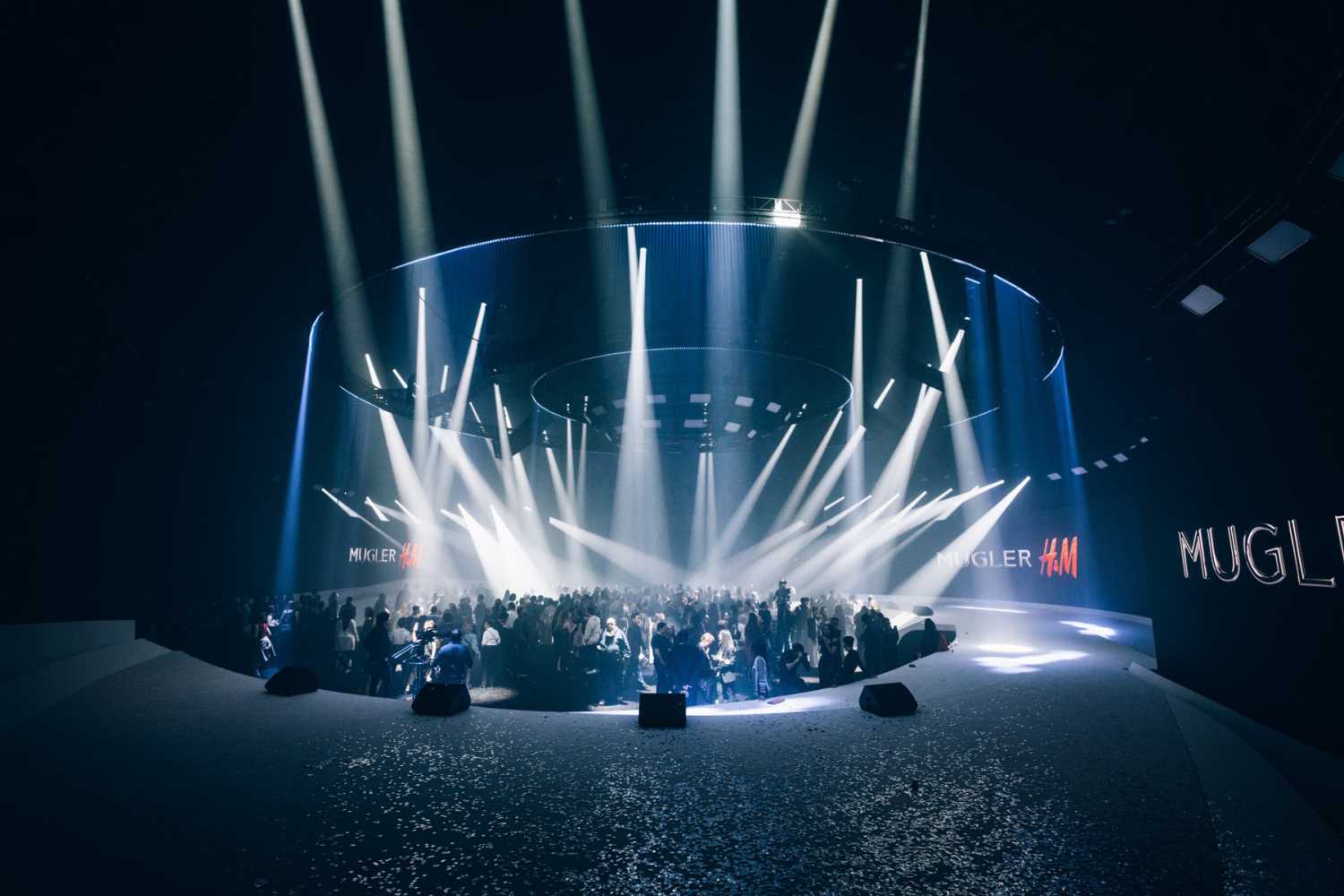Chauvet on the runway for Mugler/H&M show
- Details

This was evident in the event fashion design house Mugler and global retailer H&M held at Manhattan’s Park Avenue Armory earlier this spring to introduce their collaboration, which will launch on 11 May.
This show, which featured a scenic design by Niklas Bildstein Zaar and his Berlin-based team at SUB, commanded the attention of guests including Pamela Anderson, Charli XCX, and Chloë Sevigny, as soon as they entered the space. The design was a balance of art and technology with its circular set, spiral runways, four large, curved video screens, and a mosh-pit like space at its centre.
Adding emotional power to this panorama, and pulling its diverse elements together was an evocative and intricately detailed lighting design by Seth Bernstein that featured over 120 Chauvet Professional COLORado PXL Bar fixtures supplied by 4Wall Entertainment.
Like the other fixtures in the rig, including its 24 Maverick MK3 Profiles, the PXL Bars themselves were deliberately conspicuous in the design. “The main design principle of this show was ‘revealing the technology,” said Bernstein. “So, we were intentionally making choices to reveal show elements that are normally hidden. Lights were constantly shining through line arrays and trusses to create texture, which is something we normally avoid at all costs! Additionally, the scenic crew went back and added additional ‘cables’ to the rig for added texture between layers of trusses.”
In deploying these linear COLORado PXL units, Bernstein was able to create a consistent level of light throughout the distinctively curved design. “For this event, our creative directors envisioned a huge circular “light curtain” to open and close the show, but I really wanted this element to come back in different forms,” he said. “With our 267-foot circumference of PXL bars, it occurred to me that the design possibilities were nearly limitless.”
Bernstein worked hard to devise a way to use his 115 COLORado PXL Bar 16 and eight PXL Bar 8 fixtures to create the circles of light that were so critical to the design. “A challenge with automated batten fixtures on circle trusses is that their tilt motors collide when placed too close together,” he said.
The design team relied on the Park Avenue Armory itself to add impact to its circular concept. “We were influenced by the armoury,” said Bernstein. “Our circular light curtain was aligned in elevation with the low point of the building’s arched ceiling. This allowed us to shrink the space and then “open it up” by turning on lights at higher elevations. Also, since this is one of the last available clear span spaces with no columns in New York City, the wraparound design wouldn’t really have been possible in anywhere else, except in an arena or soundstage.”















